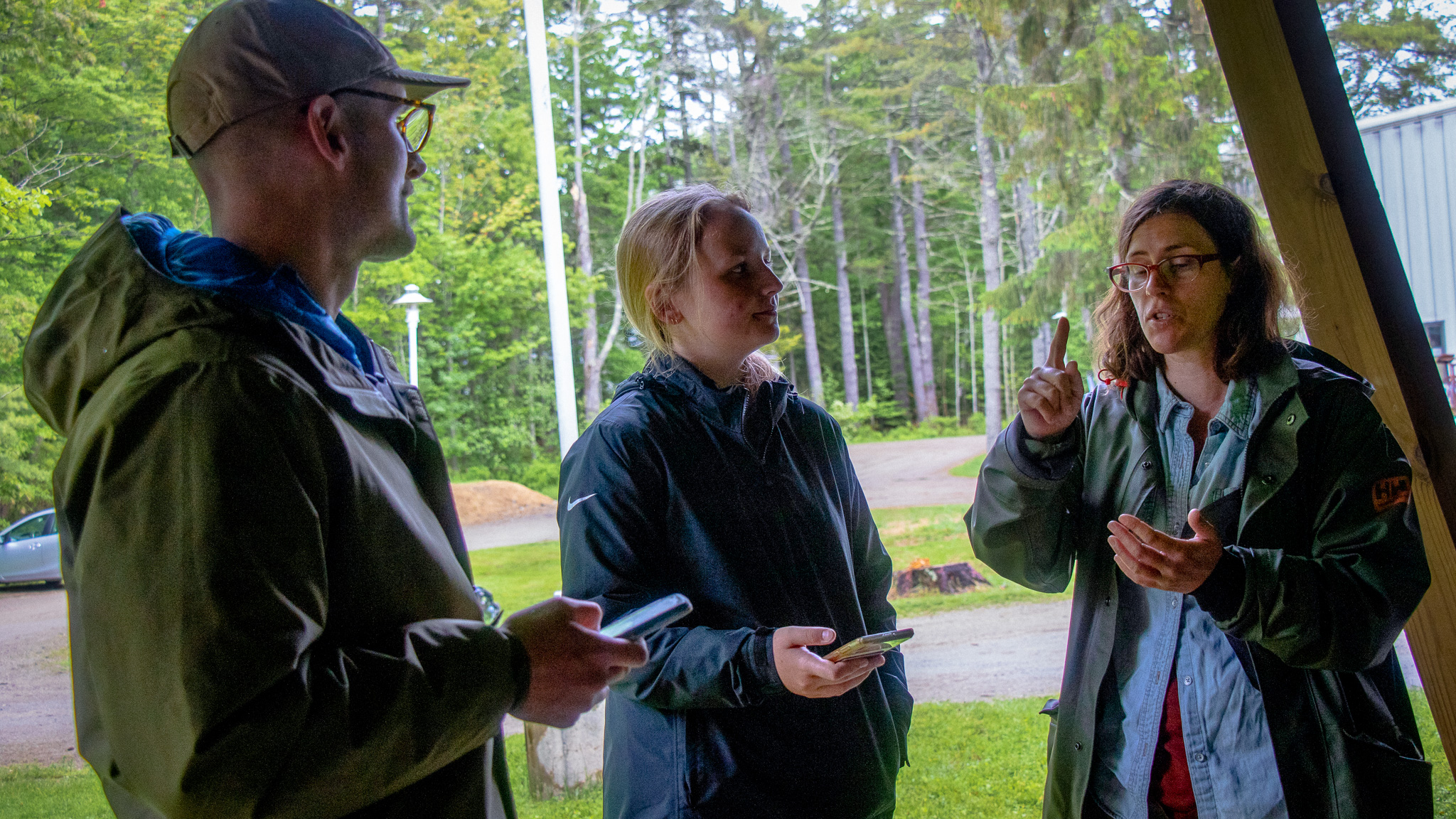
Using eDNA to Understanding Alewives Impact on Freshwater Communities
By Ilaria Bardini, Writing Intern
Alewife, an anadromous species of herring, spawn in freshwater systems along the coast of Maine. As an ecologically, economically, and culturally significant fish, their decline over the last two centuries is a crucial area of interest and study. With the development and use of environmental DNA (eDNA) techniques, researchers are finding ways to restore and revitalize Maine’s diminished alewife communities.
Sharon Mann, a University of Maine graduate student based at the University of Southern Maine (USM), grew up on the southern coast of Maine on her family’s sheep farm. Originally from a liberal arts background, Mann is now pursuing her Ph.D. in Ecology and Environmental Science (EES) under the advisory of Karen Wilson, USM Associate Professor in the Department of Environmental Science and Policy, Micheal Kinnison, Professor of Evolutionary Applications at the University of Maine in Orono, and Gerry Zegers, Associate Research Professor of Biology at the University of Maine Machias.
The focus of Mann’s research is on the “interactions between alewife and lower food web species such as cyanobacteria and zooplankton.” Alewife, Alosa pseudoharengus, are used as bait by Maine’s lobster industry and serve as an important source of food for both fish and humans. Mann’s research centers on how alewife impact lower trophic freshwater communities, such as plankton, and the use of eDNA to support efforts to rebuild the dwindled alewife populations.
“The biggest obstacle alewives are facing is habitat loss and consequential restrictions from nursery habitats.” Mann noted, “The increase of dam construction has allowed alewife populations to plummet.” Although naturally downed trees and beaver lodges pose a viable threat to the migratory needs of these fish, man-made structures are proving to be the most detrimental. Over the course of her research, Mann has worked closely with land trusts and lake associations, many of which are leading efforts to create clear passages.

Mann’s research is a prime example of both scientific and community collaboration. As part of Maine-eDNA’s state wide network of researchers, she collaborates with research facilities, such as Bigelow Laboratory for Ocean Sciences in East Boothbay, Maine. “I’m really fortunate to be able to collaborate with Bigelow’s Countway Lab and use the resources they’re able to provide.” In addition to Bigelow, Mann is working alongside the Highland Lake Association in Cumberland County and the Maine Center for Coastal Fisheries. “Primary, I worked with them for juvenile alewife seining.” With the use of purse seines, large nets cast off from boats, researchers like Mann are able to collect and observe species in a particular area. “We weighed and measured the alewife to examine the total biomass. Then, with the use of eDNA, we analyzed the water samples from the seine haul and related our findings to that biomass.”
By working with teams from a myriad of organizations, researchers like Mann are spearheading the development of eDNA techniques while engaging with Maine’s local communities. “It takes a while to do good science, optimize your methods, and analyze your results.” Mann emphasized, describing the necessity of building relationships with organizations and fellow researchers. “The most rewarding part has been experiencing and interacting with Maine’s communities and natural resources I otherwise would not have had the opportunity to see.” With an interest in resource restoration, Mann plans to continue her work on the development of eDNA tools and techniques and apply them to her personal interest in invasive aquatic plant management.
